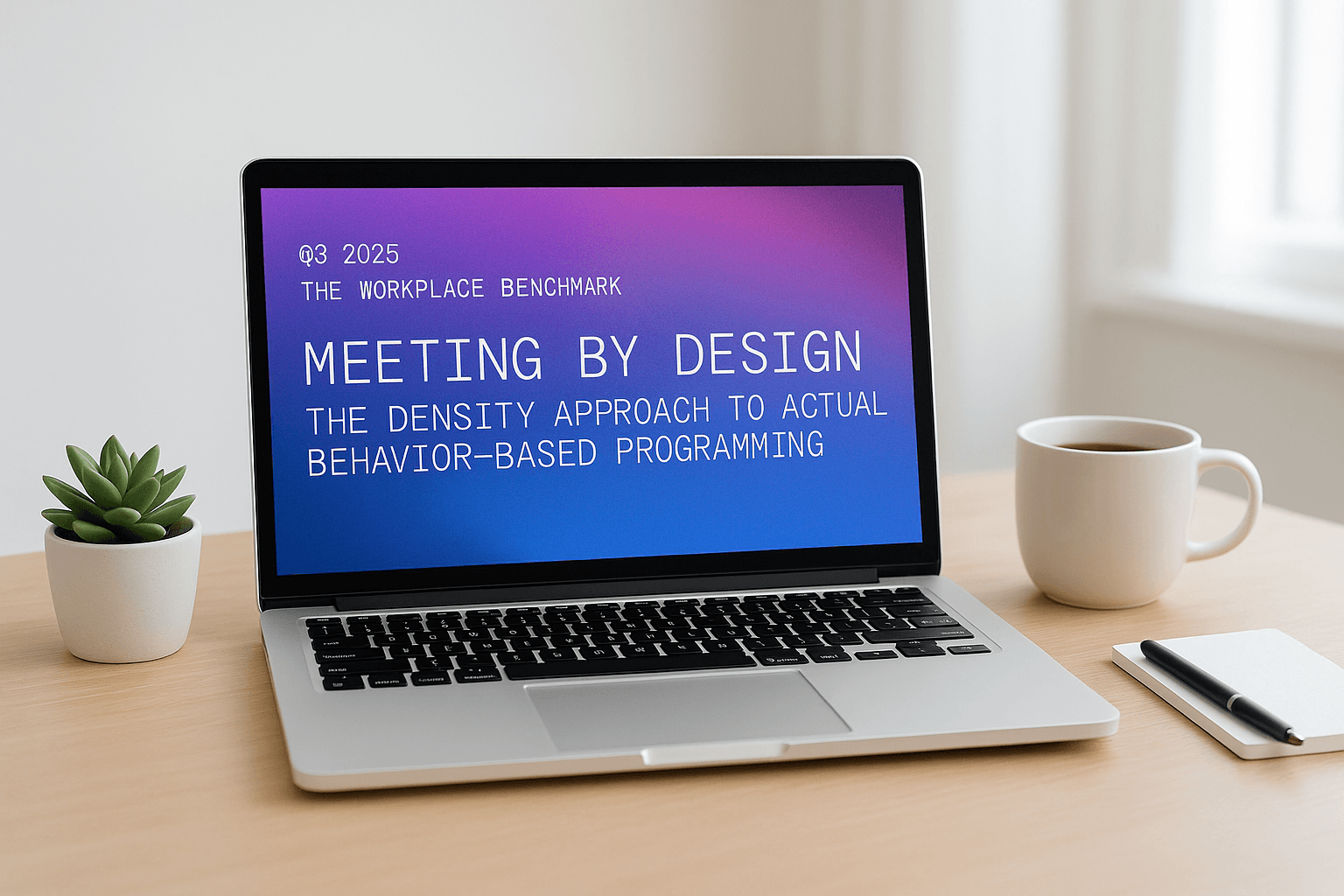Designing the post-pandemic workplace with Tracy Wymer of Knoll
We spoke to Knoll’s VP of Workplace Strategy, Tracy Wymer, to learn more about the changing landscape of the workplace.
.jpg)
Knoll creates modern furniture for homes and offices. Their tagline, “We help create spaces where people want to be,” perfectly sums up the philosophy of post-pandemic office design. If you want people in the office, you have to create a space that’s equal parts inviting and functional.
We spoke to Knoll’s VP of Workplace Strategy, Tracy Wymer, to learn more about the changing landscape of the workplace and how the reimagined, post-pandemic office will look. You can watch the full conversation above. Here are the key themes:
The pandemic's impact on work models
Tracy has helped design offices for many different businesses, so he has an insider’s perspective on how the pandemic has changed the mindsets of executives. He gave us an example of one company with a strong in-office work culture that had to send thousands of employees home in 2020. Now, a year later, a rep from that company is saying, “I don't think we have the right to tell people where to work anymore.”
The pandemic flipped the script on the way people want to work. Knoll’s statistics show that the post-pandemic workforce will be about 14% fully remote, 30% fully on site, and 56% a hybrid of the two. To attract and keep top talent, companies will have to embrace a flexible work model and consider how to adapt their office spaces accordingly.
Some companies are taking very proactive roles and saying we have to think differently about space and the elements that, quite frankly, create a good product that will entice people to come back to the office.
On real estate footprints remaining the same
Companies may initially assume that this new work model will allow them to downsize their real estate footprints, but Tracy explains why that’s not the case.
When we return to the office, circulation and wayfinding are going to be very big ... Creating generous circulation paths in the real estate world is seen as ‘wasted space.’ But it's not wasted space. It's comfort space. That’s space that allows people to comfortably pass by one another in a double-loaded corridor."
In addition to the wayfinding and circulation, we have to look at the new way offices will be used. People aren’t just coming in to check their email and do solo work anymore; they can do those things in their home office. The traditional office space will be more about collaboration and ideation spaces. These activities inherently require more room, so if you’re decreasing density and increasing collaboration spaces, you likely end up with the same footprint.
Change management requires iterations
Managing these new flexible work models is a huge change. Tracy explains, “A lot of companies are stuck in this stasis where they're saying they're not going to change a thing.” They’re putting structures and measurements in place, such as wanting to know the exact days a person will be in the office. This mitigates all the benefits of a flexible work model. Companies have to find a balance between over-management and creating helpful structure.
As businesses move forward with these changes, he says it’s important to remember that the ideas we come up with now aren’t the obvious and final solutions to these issues. We need an iterative mindset.
We're not creating monuments. This isn't a monument to work we're creating. What we're creating is a platform. And hopefully that platform has the ability to shift over time.
This is the time to ask questions and try out different ideas for seating, office design, and work models. To get to the best and final solution, Tracy says, “Experiment. Start now. Just put some things in play and trust your people … Say, ‘Hey, we’re going to try this. We may not have it right 100% of the time, but we want to hear from you. We're going to put this in place, it's based on good knowledge, let's start doing something.’”
Key Takeaways

DisruptCRE founder shares how corporate real estate is changing
Companies are moving employees from underutilized offices into "space as a service” options with utilization data.
Watch now
Half of offices are empty but you still can’t find a meeting room
Employees waste up to 30 minutes a day looking for a meeting room to meet in workplaces.
Read moreMost recent

Meeting space playbook: programming ratios that really work
Forget static formulas. This new research-driven playbook shows how to use real behavior to right-size your office for today’s meetings.

Space waste: The industry’s naughty and nice list
Our sensors spilled the beans: What industry is winning, who's wasting and who's hogging your office real estate.
.png)
Improve your occupancy sensor RFP with our best practice guide
Discover essential questions to simplify your occupancy sensor RFP process and confidently choose the right vendor.
.png)
Room raiders: The office upsizing epidemic
Tiny teams hogging big rooms leave large groups stranded—welcome to the new war for meeting space!
Explore other Density Products
Atlas for Workplace
Insights for the workplace that help you cut costs and deliver better spaces.
Learn more